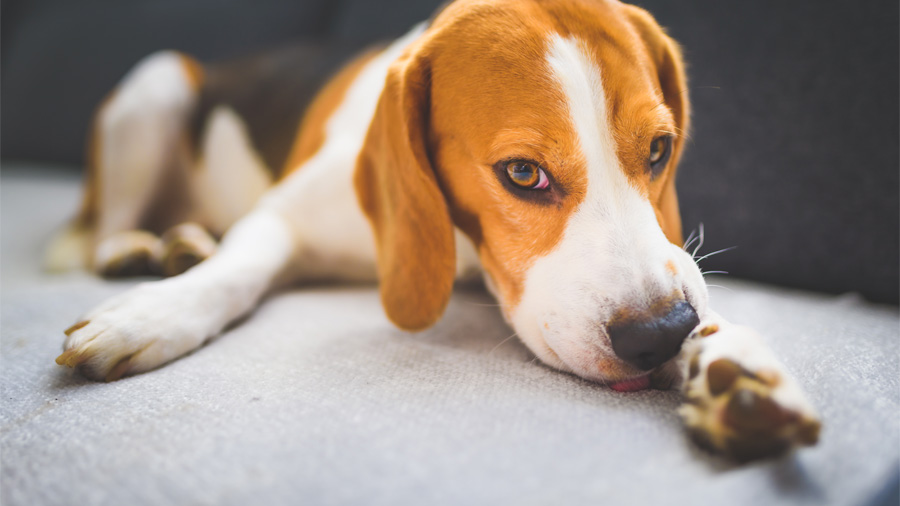Brushing needs to be consistent to be useful
Did you get your six-month appointment reminder from your dentist recently? It’s important to keep up on those appointments for your dental health, and it’s just as important that our pets get their teeth cleaned as well.
Dr. Katherine Kling, part of the dentistry and oral surgery service at the University of Illinois Veterinary Teaching Hospital in Urbana, shares strategies for maintaining good oral health in pets. “Dogs and cats will have better oral health with routine cleaning,” she explains.
You May Not Notice Problems
Dr. Kling says most dogs and cats won’t show signs of discomfort or pain in the mouth, but that doesn’t mean that there isn’t something wrong.
“Pets aren’t complainers. They can have advanced dental disease but continue to eat and play,” says Dr. Kling. Regular dental visits are critical for detecting as well as preventing problems in your pet’s mouth.
There are many signs that it’s time for your pet to come in for a checkup. These can include bad breath and red gums. The sign that can be one of the easiest to pick out for owners would be the notorious doggy breath. Smelly breath can be something that is very noticeable and a tell-tale sign that it’s time for your pet to get her teeth cleaned.
All of these signs can be symptoms of one of the most common problems that Dr. Kling sees at the hospital. “We see periodontal disease frequently overall and especially in small breed dogs like chihuahuas and dogs with crowded teeth like pugs.” she said.
Dr. Kling explained that even though periodontal disease is more common in small breed, there are many serious problems to look out for bigger dogs, as well. “Larger breed dogs are more prone to problems related to wear and crown fractures.”
As the dentistry and oral surgery service places a big emphasis on preventive care, Dr. Kling gave her insight on how to avoid these problems. “The best ways to reduce the risk of wear and crown fractures are to be selective about the toys you offer your pet. Choosing a smooth ball over an abrasive tennis ball or a rubber toy over an antler are some examples,” she advised.
How Are Teeth Cleaned?
Dental procedures are performed under a light stage of anesthesia with the airway protected. Although that worries some owners, she notes that the anesthesia for dental care is lighter than what is needed for invasive surgery. Anesthesia is necessary for patient safety so that the airway is protected from water used to ultrasonically scale the teeth.
We do not take anesthetic procedures lightly but anesthesia is necessary so that the procedures can be done with minimal stress to our patients. Anesthesia allows for a full tooth by tooth exam and dental radiographs,” said Dr. Kling. Light anesthesia is required for these procedures.
During a dental examination, Dr. Kling will also take X-rays of the tooth roots. The radiographs are taken while the pet is under anesthesia so that it remains still.
Preventive Home Care
Dr. Kling says one of her goals is to prevent dental problems in her patients. She offers lots of ideas for keeping the mouths of pets healthy.
“Dogs and cats should have their teeth brushed once a day. All owners really need is an ADA-approved toothbrush and some water,” says Dr. Kling, “but the brushing needs to be consistent for it to be useful.”
She warns that human toothpaste should not be used on pets because of the ingredients used. Dr. Kling also cautions that brushing teeth is an activity that needs to be introduced slowly to a pet. “It’s similar to cutting nails; take it slowly and commit to doing it for the long run so that your pet doesn’t hate having his teeth cleaned,” she said.
Owners can supplement the process with other products designed to get plaque off the surface of the teeth. A great resource for learning about teeth-cleaning products is the Veterinary Oral Health Council website. At vohc.org, all the listed products have been tested and proven helpful. Nevertheless, Dr. Kling says it is still important to maintain a tooth-brushing regimen with your pet at least three times a week to reduce progression periodontal disease.
Your veterinarian will work with you on a plan for preventive dental care at home and in the clinic to keep your pet’s mouth healthy and comfortable. For more information and to schedule your pet’s annual dental examination, contact your local veterinarian.
By Hannah Netisingha
Feature photo by L. Brian Stauffer

![[Dr. Katherine Kling examines a cat]](https://vetmed.illinois.edu/wp-content/uploads/2021/04/pc-kling-cleaning.jpg)


